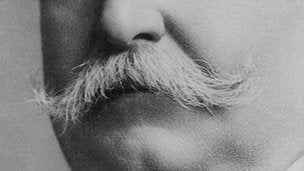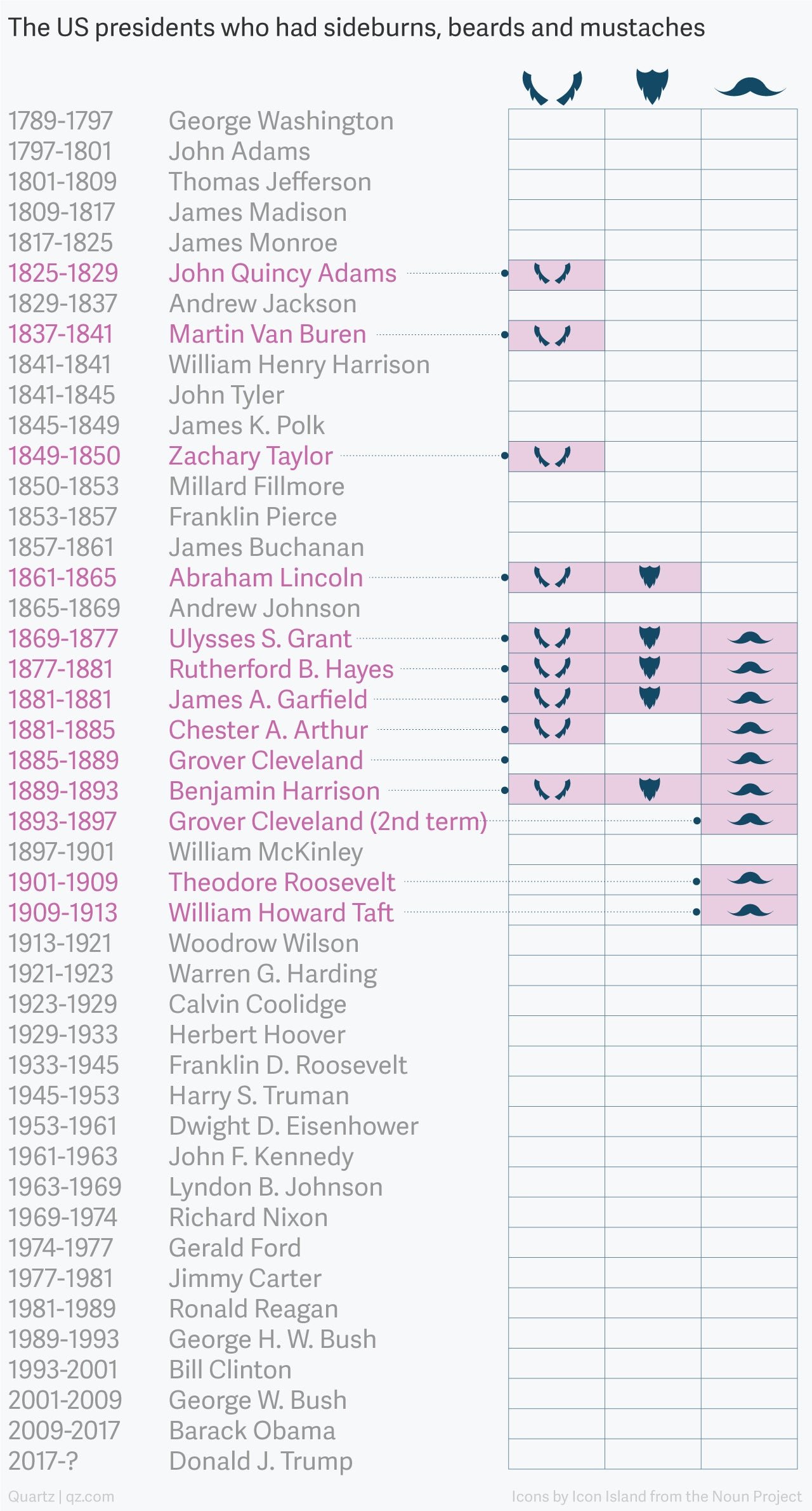It’s been more than a century since a US president had facial hair
US president Donald Trump doesn’t appear to have ever had facial hair. Trump is so into the clean-shaven look that he reportedly decided not to nominate lawyer and diplomat John Bolton for secretary of state because he didn’t like the look of his mustache (the American Mustache Institute registered its objections). The only facial hair sported by Trump’s very male cabinet is Ben Carson’s goatee. Some observers don’t think Trump could grow a beard even if he wanted to.


US president Donald Trump doesn’t appear to have ever had facial hair. Trump is so into the clean-shaven look that he reportedly decided not to nominate lawyer and diplomat John Bolton for secretary of state because he didn’t like the look of his mustache (the American Mustache Institute registered its objections). The only facial hair sported by Trump’s very male cabinet is Ben Carson’s goatee. Some observers don’t think Trump could grow a beard even if he wanted to.
So it seems highly unlikely that Trump will end the US’s now century-long presidential facial hair drought.
The last time facial hair graced the face of a US president was March 4, 1913. This was the day William Howard Taft and his voluminous mustache were replaced by the clean-shaven Woodrow Wilson in the nation’s highest office. The American Mustache Institute suggests March 4th be known as ”Taft Day” in remembrance.
Taft was the end of a run of great facial hirsuteness in our nation’s highest office. Abraham Lincoln started the trend in 1861, when he entered office as the first president with a beard or mustache—only sideburns had previously appeared in the White House. From 1861 to 1913, nine of eleven US presidents had facial hair.
The following table shows which US presidents had sideburns, beards, and mustaches. If you don’t think sideburns count as facial hair, tell that to John Quincy Adams’ mutton chops.

Presidential facial hair is a reflection of the times. After a fallow period in the 18th and early 19th centuries, a hairy face was all the rage in the late 19th century. There are a variety of explanations for the rise of beards at the time. They range from the innocuous, like an increasingly romantic view of the natural world and thus natural faces, to the more dispiriting explanation that, as Sean Trainor explains in The Atlantic, the beard came to be “a symbol of white, masculine supremacy.”
The 20th century was generally a clean shaven one in the US—excepting brief surges in beards in the 1960s and 70s, and mustaches in the 1980s. This could be attributed to sanitary concerns: New theories about hygiene and disease transmission put beards under suspicion.
Today, beards are back with a vengeance. A hairier look is so popular, that it is impacting the bottom line of Procter & Gamble, a major manufacturer of razors. Beard grooming products are a booming industry.
The trend does not seem to be reaching the political sphere, however. Facial hair is still seen as a liability for a winning elected office. One 2010 political science study suggested that since women won the right to vote, facial hair became less popular among politicians because of its associations with domestic violence and chauvinism. “Men with facial hair are seen as more supportive of use of violence and women and feminists are less likely to vote for them,” the paper’s authors write.
Today, only two out of 80 men in the US Senate have beards—the mustachioed Independent Angus King of Maine and Republican John Hoeven of North Dakota. Not one of the 20 favorites to win the presidency in 2020 on betting site Paddy Power currently has facial hair. House of Representatives speaker Paul Ryan, who sported a beard in 2015, is probably the most likely candidate to bring facial hair back to the White House.
Of course, if Elizabeth Warren, Michelle Obama, Nikki Haley, and Hillary Clinton became president (they’re considered among the most likely people to do so), that would end any discussions about clean-shavenness in the White House—making space for far more important ones.